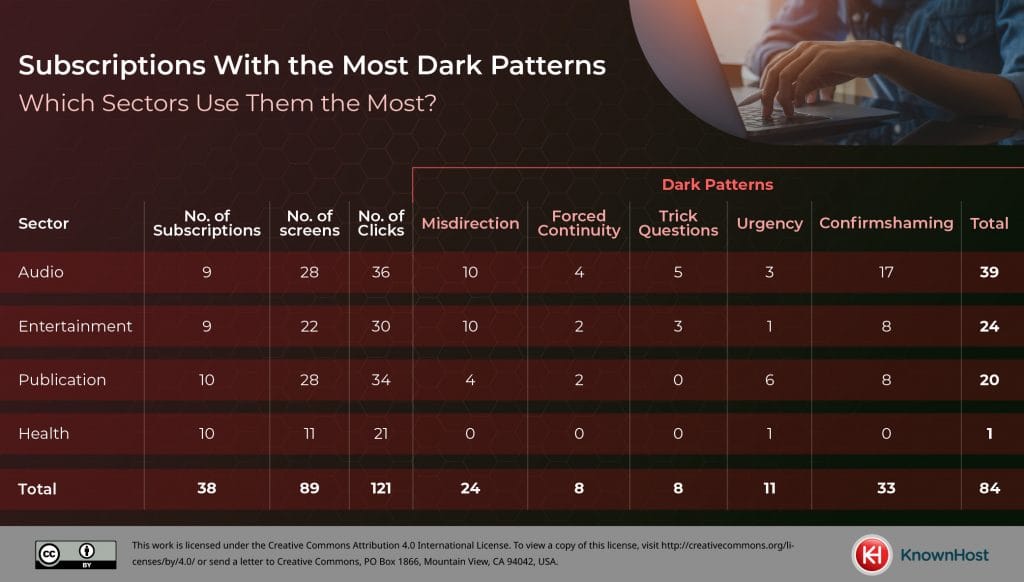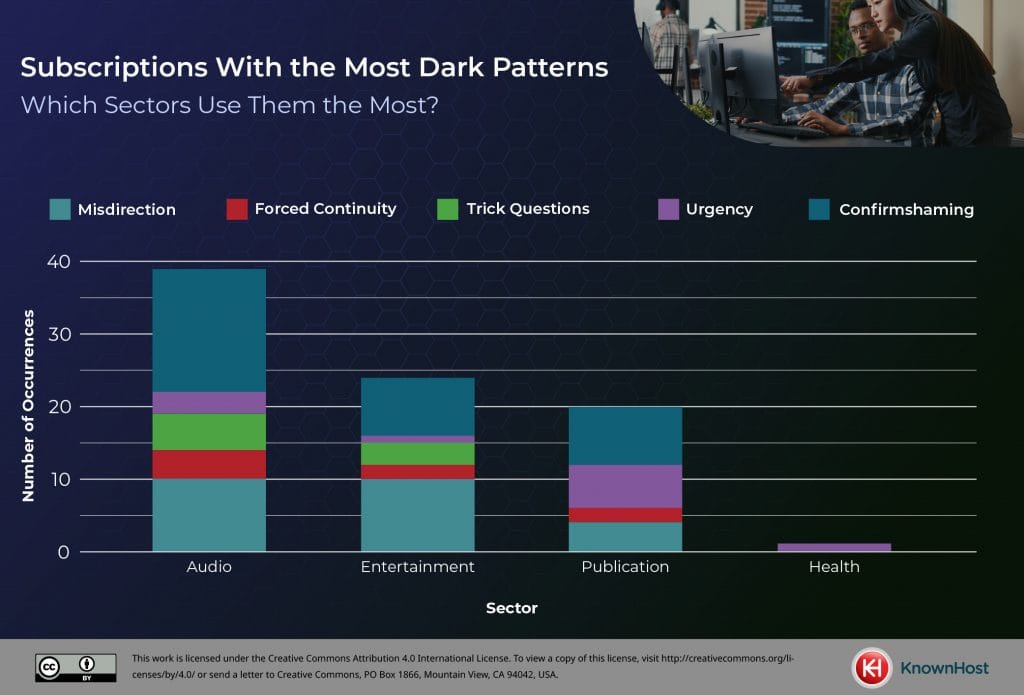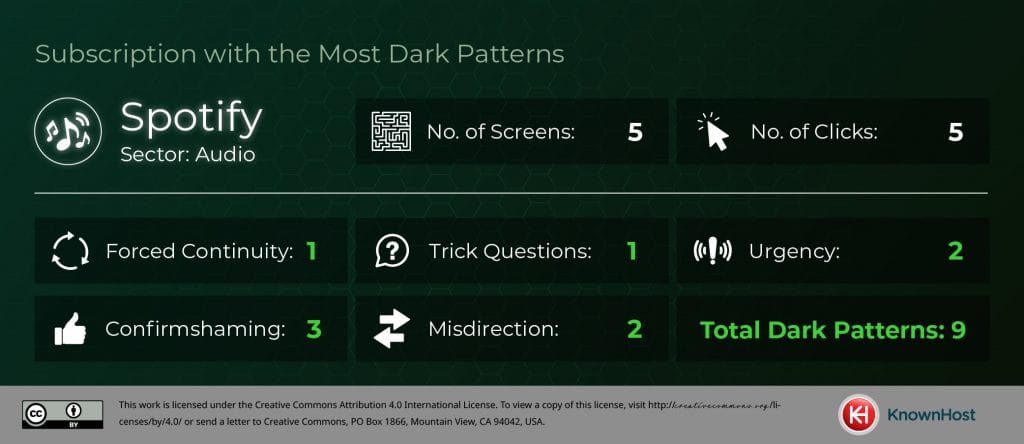Hardest Subscriptions to Cancel
When cancelling subscriptions, it is always a time-consuming and laborious task that many dread or put off until the subscription auto-renews. In the US, the Federal Trade Commission confirmed the ‘Click-to-Cancel’ Rule which has recently taken effect with a deadline of May 14th for companies to meet the requirements across their sites. This is to prevent businesses from using unfair or deceptive practices to maintain subscribers. Other countries, such as the UK, have also been taking steps to begin making cancellation policies more straightforward and user-friendly.
In this study, KnownHost analyzed 44 UK-based subscriptions across six different sectors, including audio, entertainment, food delivery, gaming, publications and health, recording the number of clicks, screens and dark patterns that were used to find out which subscriptions were the most difficult to cancel.
Subscriptions with the Most Dark Patterns
Across all the sectors, a total of 93 dark patterns were recorded, requiring 110 screens and 150 clicks overall.
The main sectors focused on within the study, due to the higher number of subscriptions available, were audio, entertainment, publications and health. Interestingly, most publications required in-person contact to cancel by phoning cancellation numbers which will no longer be allowed in the US under the new regulations.

Across these four sectors, a total of 84 dark patterns were recorded, requiring 121 clicks and 89 screens to cancel every subscription. Audio had the highest number of clicks with 36, whilst audio and publications had the same number of screens with 28.
For misdirection, audio and entertainment were joint with 10 cases recorded, whilst health had no recorded cases and publications only 4. Forced continuity was noted with 4 cases on audio subscriptions, dropping to twice for both entertainment and publications whilst health recorded 0. Confirmshaming was the most recorded dark pattern with 33 cases, with audio providing 17 of those cases.

Audio subscriptions used dark patterns 39 times during the cancellation process, whilst health apps had the fewest due to the simplicity of cancelling through app stores. However, there was one case of urgency with the availability of a discount offer.
Publications had the most cases of urgency as they offered multiple discounts and incentives, which appeared as a limited offer, to remain subscribed. During the in-person contact, there were multiple questions to confirm cancellation which were recorded as confirmshaming. Entertainment had the joint highest cases of misdirection, along with audio, using visual methods to confuse users into selecting the wrong response.
Subscription with the Most Dark Patterns

Spotify is the subscription with the most dark patterns overall according to research, with 1 case of forced continuity and trick questions, 2 cases of urgency and misdirection and 3 cases of confirmshaming, which continually tries to convince users not to cancel. However, it only needed 5 clicks and 5 screens to cancel on a web browser.

Food delivery subscriptions, such as Hello Fresh and Gousto, had the highest number of clicks required to cancel across the study. Hello Fresh recorded no dark patterns, whilst Gousto recorded 1 case of misdirection and 1 case of urgency, by incentivizing staying by pushing the subscription back a week and using discounts to persuade users into continuing the subscription.
Conclusion
From the study, it is clear that the degrees of difficulty to cancel subscriptions vary. It’s important to check whether subscription services implement an auto renewal clause as many don’t realise until it is too late. Whilse new regulations continue to roll out, it is important to remain aware of the possible tactics that can be used to keep individuals subscribed.
Methodology
For this study, KnownHost created a seed list across six subscription sectors, including Audio, Food Delivery, Entertainment, Publications, Health and Gaming. 44 UK-based subscriptions were then confirmed with their free trials and were each individually canceled, recording the number of clicks and screens it required to confirm cancelation. Along with this, a list of dark patterns were investigated and counted depending on the cancelation process.
Dark Patterns that were tested in the study:
- Misdirection – Using visual cues or design elements to mislead or distract users from noticing important information or making unintended selections.
- Hidden Costs – Concealing or downplaying additional charges, fees, or recurring payments associated with a product or service until the user is committed or has made a purchase.
- Forced Continuity – Automatically enrolling users into subscriptions or ongoing services without their explicit consent or by making the cancellation process excessively difficult.
- Trick Questions – Using misleading or confusing language in the form of questions, making users unintentionally agree to terms or opt into services they do not want.
- Urgency – Creating a false sense of urgency or scarcity to pressure users into making quick decisions or purchases, often by displaying limited availability or countdown timers.
- Confirmshaming – Using guilt, shame, or other negative emotions to pressure users into consenting or taking a specific action by framing alternative choices as unfavorable or socially unacceptable.